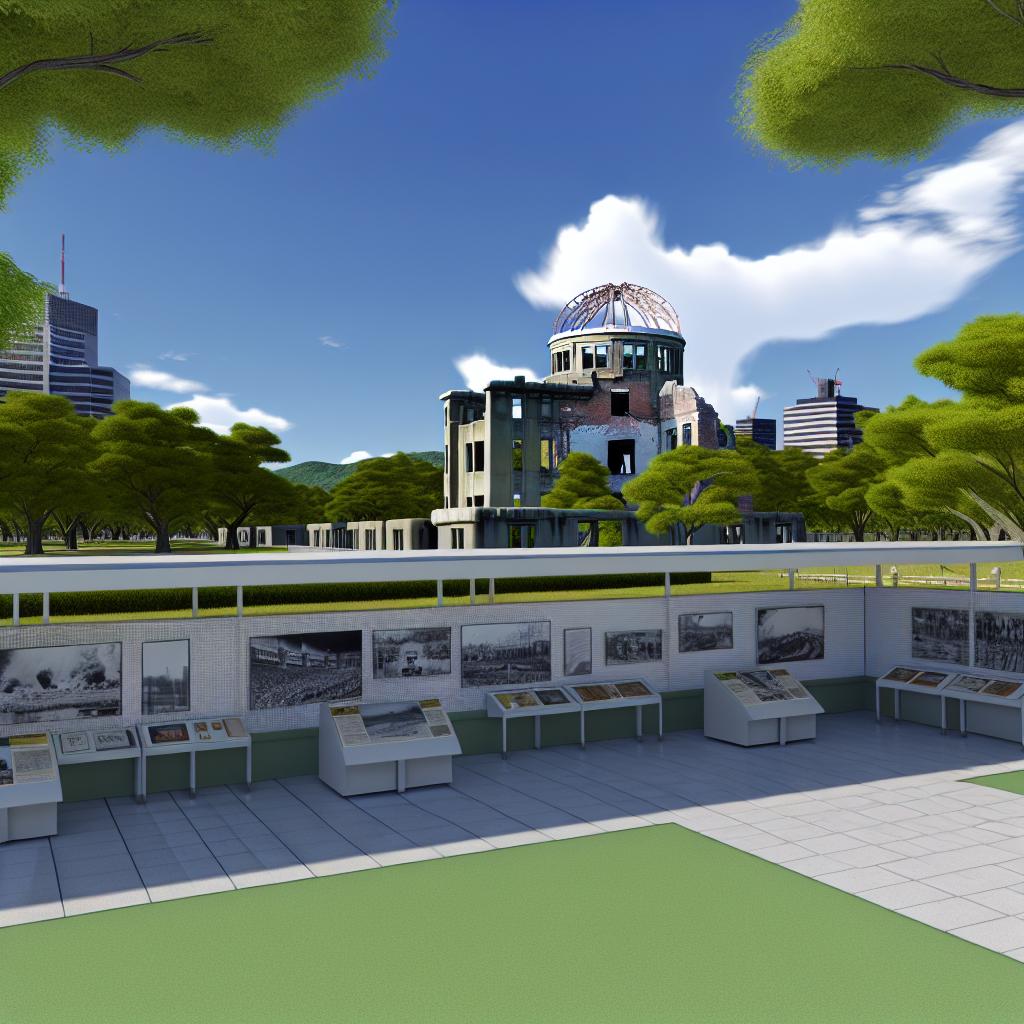Overview of Hiroshima Peace Memorial Park and Museum
The Hiroshima Peace Memorial Park and Museum is a significant site that serves as a poignant reminder of the past while advocating for a peaceful future. This sacred ground is dedicated to the memory of those who perished due to the atomic bombing during World War II, and it plays an important role in educating current and future generations about the impacts of nuclear warfare.
Location and Accessibility
Located in the heart of Hiroshima, Japan, the Hiroshima Peace Memorial Park is designed for easy accessibility to both local and international visitors. The park is well connected through public transport. Hiroshima Electric Railway, commonly known as Hiroden, offers routes directly from Hiroshima Station with stops at Genbaku Dome-mae, providing seamless access to the park’s primary entrances. Additionally, for those opting for bus travel, the Hiroshima Bus Center is conveniently situated nearby, ensuring ease of access for all visitors.
The Peace Memorial Park
The expansive grounds of the Hiroshima Peace Memorial Park encompass around 120,000 square meters, combining beautifully landscaped gardens with numerous monuments and memorials that serve as symbols of peace. The park was thoughtfully constructed on the land that once bore witness to the active commercial life of Hiroshima before it was destroyed by the atomic bomb on August 6, 1945. Its transformation into a place of remembrance is both a tribute to the past and a symbol of hope for the future.
Key Monuments Within the Park
One of the most powerful and enduring symbols within the park is the Atomic Bomb Dome, also known as Genbaku Domu. The dome was originally part of the Hiroshima Prefectural Industrial Promotion Hall. Despite the devastation incurred during the bombing, the structure remarkably withstood the blast, leaving behind the skeletal remains that poignantly capture the tragedy and resilience of Hiroshima. Today, it stands as a site of profound historical significance and has been acknowledged as a UNESCO World Heritage Site.
Another key feature of the park is the Cenotaph for the A-Bomb Victims. This monument is designed in the shape of an arch and houses a stone chest that contains a registry of the names of all the people who lost their lives due to the bombing. The Cenotaph is thoughtfully positioned in alignment with the Peace Flame and the Atomic Bomb Dome, creating a visual alignment that evokes reflection and hope for a future without nuclear weapons.
Peace Flame and Memorial Cenotaph
The Peace Flame, first lit in 1964, holds significant symbolic value. It will continue to burn until a world free of nuclear weapons becomes a reality, thereby embodying the ongoing commitment to global peace initiatives. Positioned along the central axis of the park, in line with both the Cenotaph and the Atomic Bomb Dome, the flame emphasizes the dedication to remembering the past while looking toward a peaceful future.
Hiroshima Peace Memorial Museum
In addition to the park, the Hiroshima Peace Memorial Museum plays a vital role in conveying the profound stories of the atomic bombing and its repercussions. The museum is divided into two main sections: the East Building and the Main Building, both of which house exhibits that delve into the complex narratives surrounding the bombing.
Exhibits and Displays
The museum’s collections feature a variety of personal artifacts that belonged to victims, such as clothing and cherished photographs, which humanize the sheer scale of the tragedy. Detailed displays and explanatory panels provide comprehensive information on the development and deployment of the atomic bomb and analyze its immediate and long-term effects on both Hiroshima’s populace and infrastructure. The exhibits aim to impart a multifaceted understanding of this pivotal historical event, emphasizing the profound impact of nuclear warfare on human life and the importance of peace.
Visitor Information
The Hiroshima Peace Memorial Park is accessible throughout the year, welcoming visitors who wish to pay their respects and learn more about this critical piece of history. It’s important for those planning a visit to note that while the park itself remains open, the museum operates under specific hours, which may vary. Prospective visitors are encouraged to check the latest details either through the museum’s official website or by contacting the museum directly. To offer an enriching experience, guided tours are available in several languages, catering to a wide range of international guests who wish to gain deeper insights into the park’s significance.
Conclusion
Both the Hiroshima Peace Memorial Park and Museum stand as poignant emblems of the consequences wrought by nuclear conflict and serve as vital advocates for global peace. Together, they underscore the necessity to remember the past while actively working towards a peaceful future. Visitors and those interested in learning more are invited to explore further details by visiting the official Hiroshima Peace Memorial Museum website. This site remains an integral location for reflection, education, and commitment to the continual pursuit of a world free from the threat of nuclear weapons.













